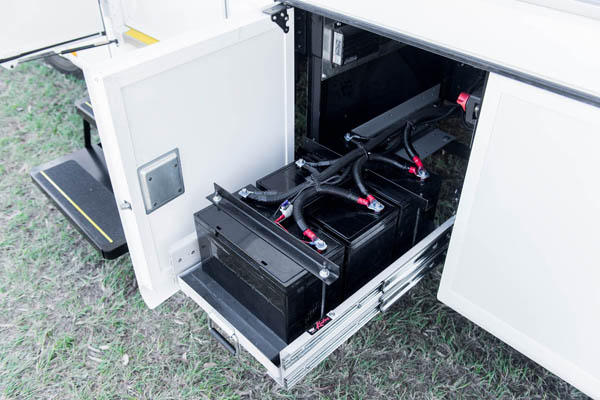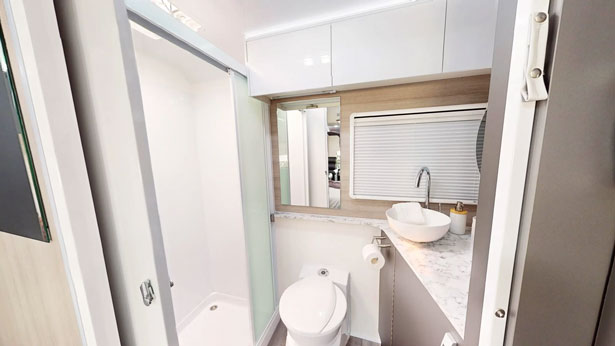
The ongoing maintenance of batteries is an essential part of motorhoming and caravaning. While many motorhomers and caravaners will use powered sites, which generally ensure batteries are being maintained from the on-board chargers, batteries which are being used while free camping or sitting idle, when not being used at all, will suffer the most distress.
Three stage battery chargers are installed into every Avida, they will assess the battery’s charge status and then monitor the charging rate automatically. When the charger detects low voltage, it will begin with a bulk charge, generally around 14.4V until the batteries are approx. 75% charged.
The charger will then switch to absorption mode and charge the batteries for several hours, at approx. 13.6V, to provide a deeper charge to the battery’s plates. Once the batteries reach approx. 95% capacity, the charger will then switch to the float mode and provide a charge rate of approx. 13.2V to keep the batteries at their optimal level. Small loads on the batteries may then be compensated by the charging rate from the battery charger however significantly higher loads will then revert back to the absorption stage.
Our 12V control panels have low voltage protection so battery power supply is turned off to the control panel once the batteries reach approx.10.8v, in order to avoid damage to the batteries.
However inverters, which are connected directly to the batteries and not through the 12V control panel, will continue to drain batteries when the inverter is left on.
To protect the batteries from constant drain, the inverters should be turned off when not in use.
We use 100amp deep cycle sealed AGM batteries and depending on the Avida model, will determine the number of batteries and the size of the charger required. If only one battery is installed, a 16amp charger is fitted. When two batteries are installed, a 22amp charger is fitted.
As combination inverter/charging systems are used with greater charging facilities are used, three or four batteries may be used accordingly.
Should additional batteries be installed to the Factory standard, the size of the battery charger may also need to be changed to cater for the larger capacity. A 16 amp charger trying to charge 2 x 100amp batteries will not be as efficient as a 22amp charger. The charger will have to operate at a higher charging rate for longer periods of time and may cause premature wear and tear on the charger.
While in use, the batteries can receive a charge from three methods:
- While driving (via the vehicle’s alternator);
- The on-board 240V charger and
- If solar panels are fitted.
While vehicles are not in use or in storage, the batteries should be charged on a monthly basis with the 240V charger to compensate for any natural discharge of the batteries. The batteries should not be allowed to fall below 10.5V and batteries which have been left for long periods without charging and fall below the 10.5V and will require specific a recharging regime to recover the batteries.
Simply turning on the on-board 240V charger for discharged batteries may cause the batteries to overheat, prolonged over heating may cause damage to the batteries and casings through the process identified as “thermal runaway”, requiring the batteries to be replaced.
The batteries should be slowly re-charged over a 3 day process, Step 1) Day 1-turning the charger on for 4 hours only and then allowing the batteries to cool for 12 hours. Step 2) Day 2 – repeat step 1. Step 3) Day 3 – turn charger on for 4 hours only, allow batteries to cool for 8 hours, then reconnect and allow batteries to recharge fully overnight.
It is important batteries are regularly and correctly maintained rather than having to perform a recovery process or damaging the battery cases by incorrect charging procedures resulting in damaged cases and batteries not holding a charge.
A simple maintenance schedule of recharging batteries once a month will help provide peace of mind while enjoying the RV lifestyle in your Avida.



